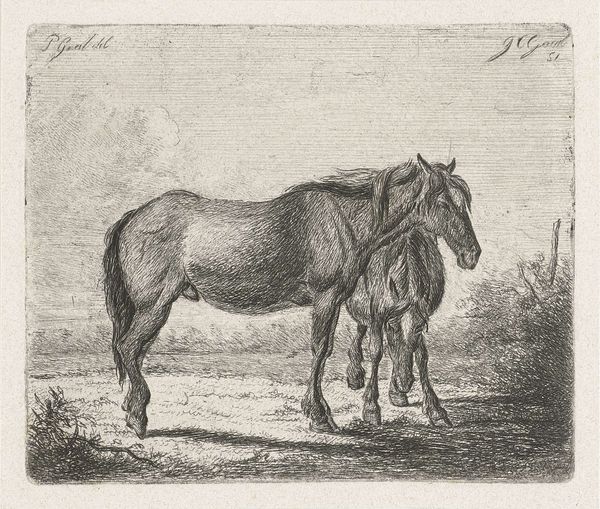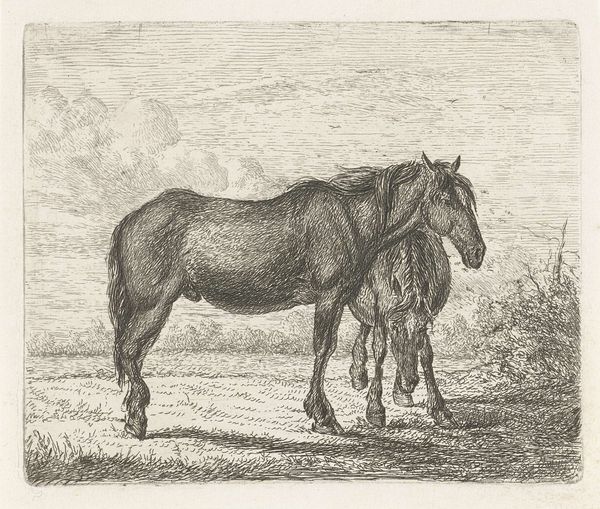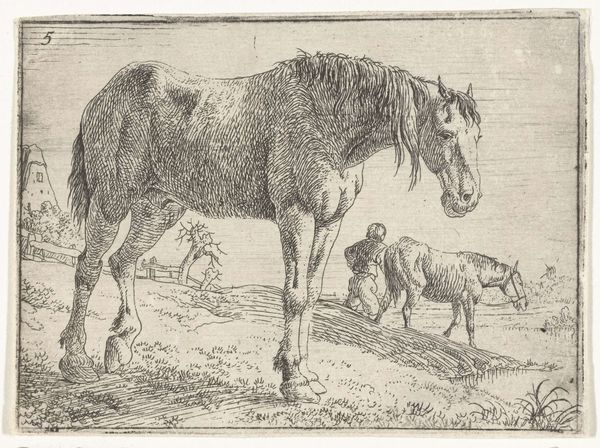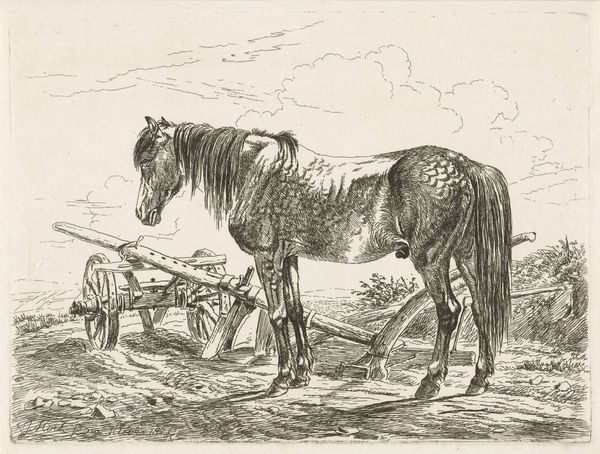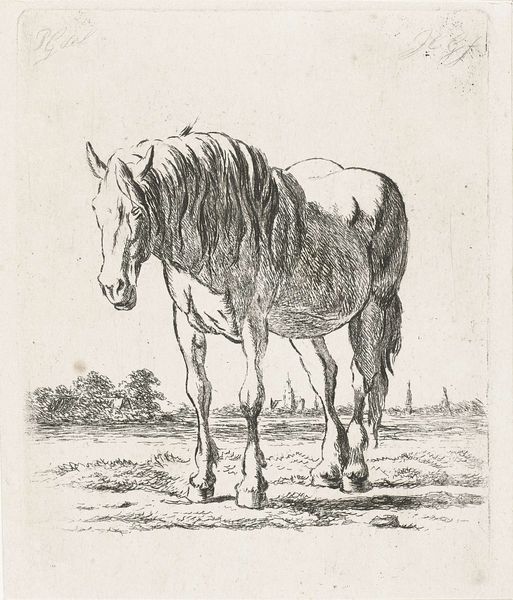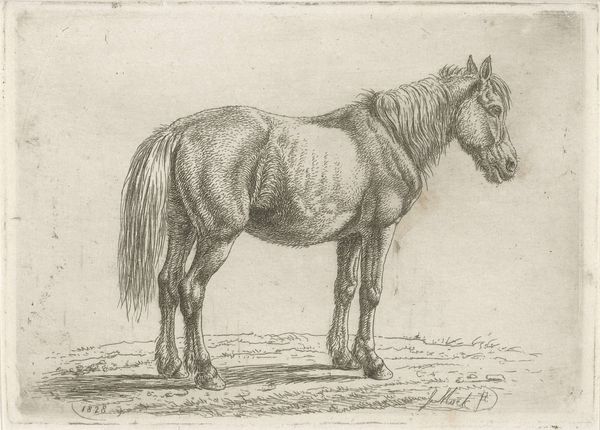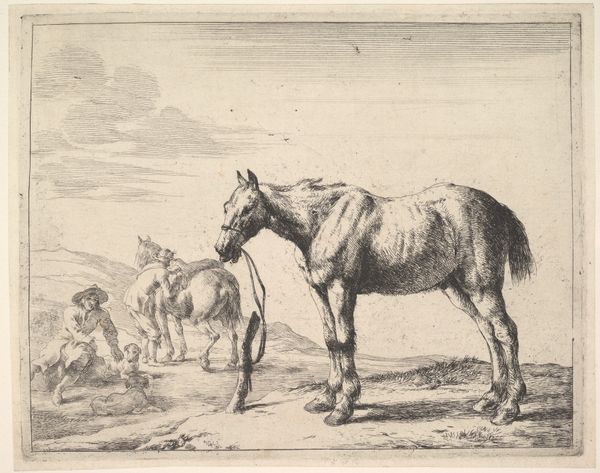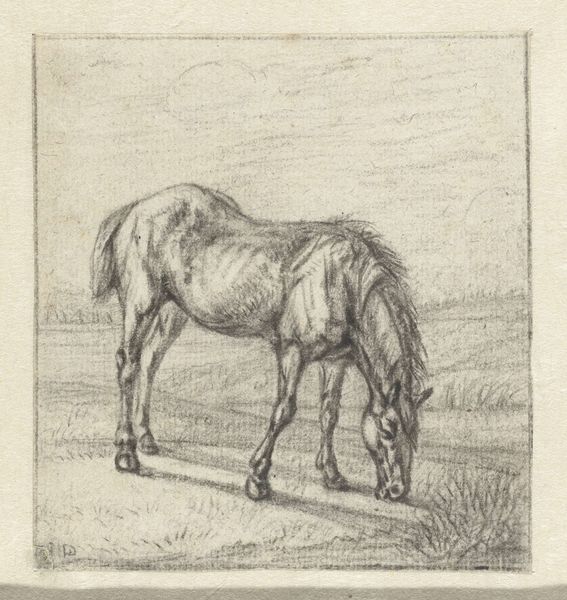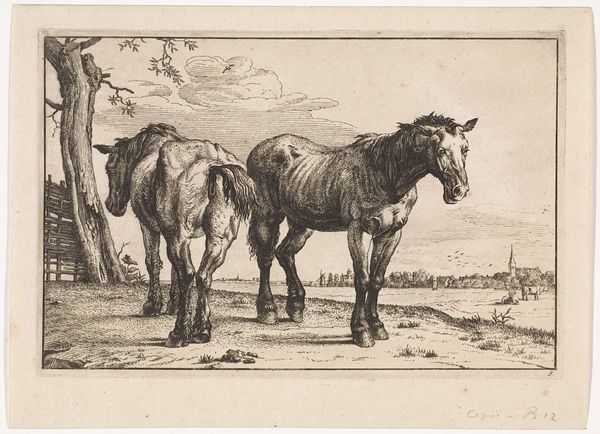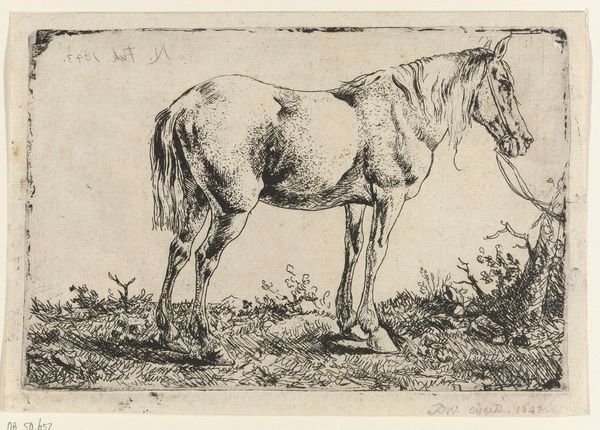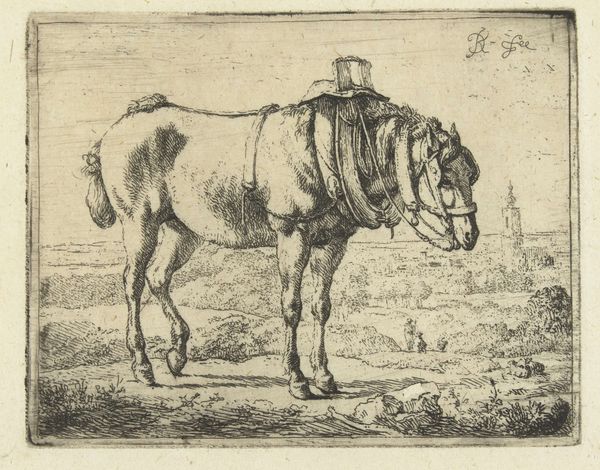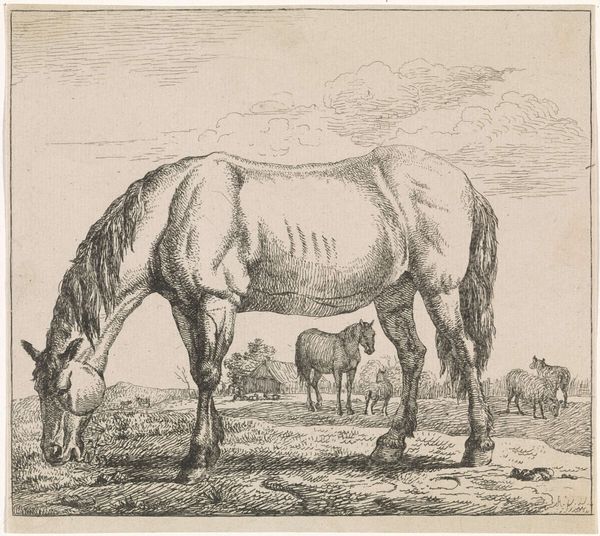
drawing, print, etching, graphite
#
drawing
#
animal
#
dutch-golden-age
# print
#
pen sketch
#
etching
#
pencil sketch
#
landscape
#
horse
#
graphite
#
sketchbook drawing
#
realism
Dimensions: height 93 mm, width 120 mm
Copyright: Rijks Museum: Open Domain
Editor: So, this is “Standing Horse before a Flock of Sheep,” an etching by Jacobus Cornelis Gaal from 1851. There's a kind of quietness about it. A solitary horse amongst these fuzzy, indistinct sheep. What do you see in this piece that I might be missing? Curator: Beyond the simple pastoral scene, I see a representation of social order. Consider the horse: for centuries, it has symbolized power, nobility, and even aggression. Gaal positions it *before* the sheep, doesn't he? Dominating the visual field. What might those sheep represent in contrast to the horse, do you think? Editor: Maybe… the common people? Following, rather than leading? It feels like the horse almost casts a protective shadow over them. Curator: Exactly. This arrangement speaks volumes about the assumed hierarchy of the time. Also, observe how the artist renders the horse with such intricate detail compared to the almost generic representation of the sheep. The artist highlights and almost idealizes the majestic, imposing horse. Does this shift your reading of the "quietness" you observed? Editor: Definitely. It makes the whole scene feel a little less peaceful, a little more like a carefully constructed display of power dynamics. But also… a melancholic portrait, wouldn't you say? Perhaps questioning these very established ideas? Curator: I agree! And think of the etcher’s tools—the lines that carefully delineate the figures are reminiscent of political engravings from the period. Gaal uses these symbols to question traditional concepts while preserving familiar motifs in landscape art. Seeing the connection helps us rethink the work’s intended meaning. Editor: That's fascinating! I hadn’t considered it in terms of social hierarchy at all. Seeing how the horse acts as a symbol really changes the way I interpret the entire drawing. Thanks! Curator: Indeed, art provides a tangible language to explore and maybe even disrupt cultural continuities and our preconceived assumptions!
Comments
No comments
Be the first to comment and join the conversation on the ultimate creative platform.
